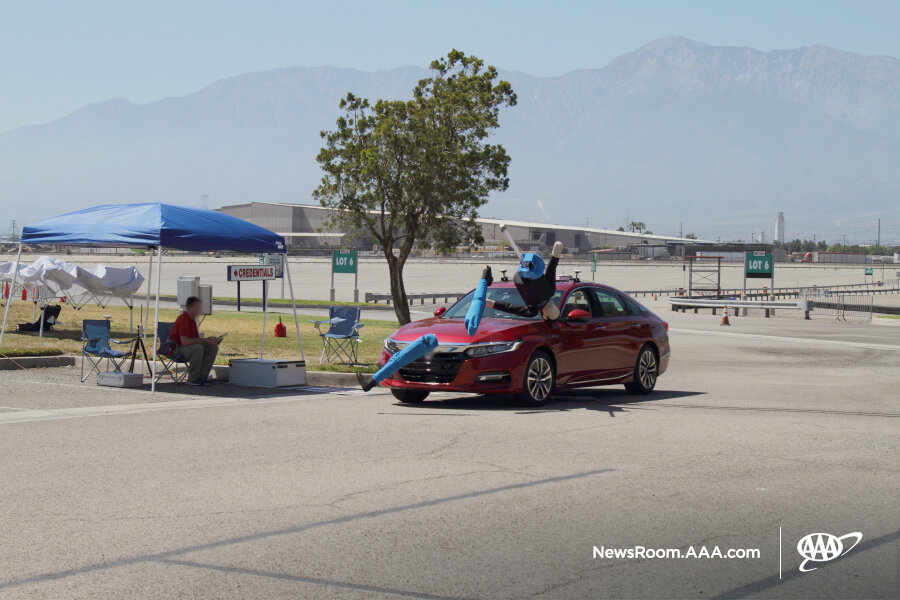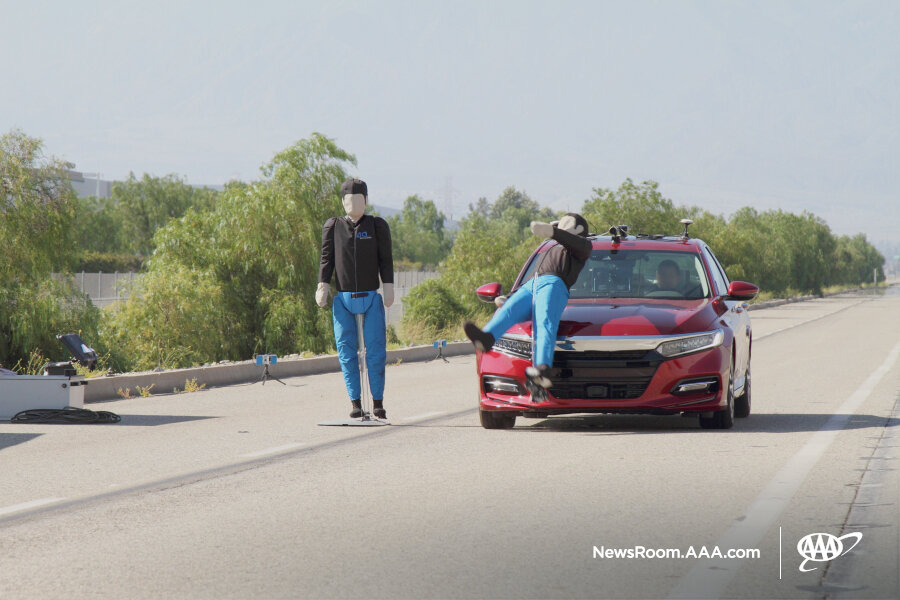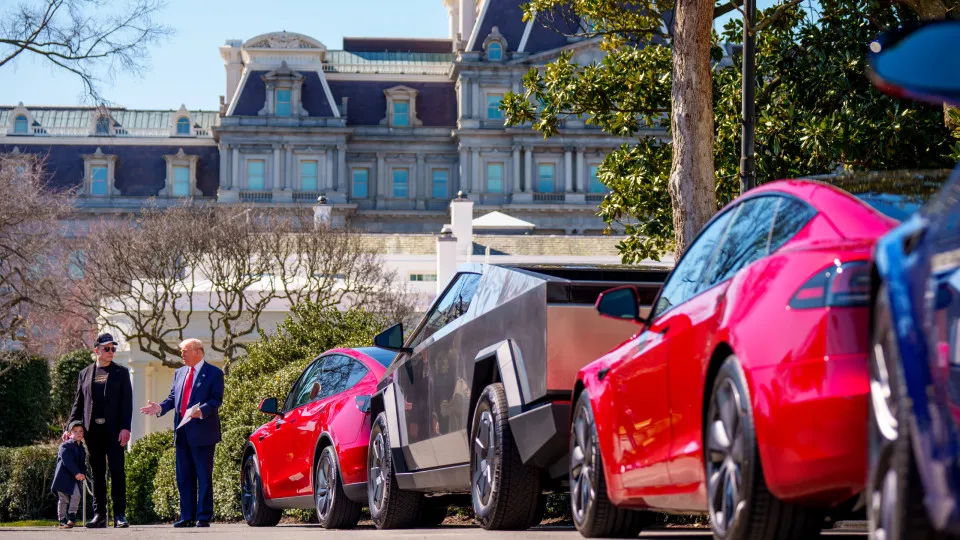AUTONEWS

AAA tests hits versus misses in AEB systems
We're not there yet. Down the road we're about to reach 2020 but down the real road, a pedestrian is moving at a point when emergency braking must occur— yet vehicles aren't equipped with adequate detection technology to avoid calamity.
Greg Brannon, the American Automobile Association (AAA's) director of Automotive Engineering and Industry Relations, said that the AAA research effort found current systems "far from perfect."
The wake-up warning was especially bracing considering over half of pedestrian fatalities were after dark.
Nearly 6,000 pedestrians account for 16% of all traffic deaths; it's a percentage that has steadily grown since 2010.
The AAA in turn has warned that detection systems just don't work when they are most needed. The AAA revealed results of their research: (1) Automatic emergency braking systems with pedestrian detection perform inconsistently (2) automatic braking systems with pedestrian detection are completely ineffective at night.
Robert Duffer, senior editor, The Car Connection, called the test results alarming.
Speed contributed to percentages. The AAA release said that "a pedestrian hit by a vehicle traveling at 20 mph has an 18% risk of severe injury or death. Increase that by just 10 mph to 30 mph and the risk more than doubles to 47%."
How did the AAA test? The organization teamed with the Automobile Club of Southern California's Automotive Research Center. In focus was the performance of four midsize sedans equipped with automatic emergency braking with pedestrian detection.
Tests were carried out on a closed course. The study team used simulated pedestrian targets.
Test scenarios:
A child darts out from between two parked cars in front of a vehicle traveling at 20 mph and 30 mph.
An adult crosses in front of a vehicle traveling at 20 mph and 30 mph during the day and at 25 mph at night.
Two adults stand along the side of the road with their backs to traffic, with a vehicle approaching at 20 mph and 30 mph.
A vehicle turns right onto an adjacent road and an adult crosses at the same time.
Test results of all the scenarios can be found in the AAA release. Three in particular stand out.
"When encountering a child darting from between two cars, with the vehicle traveling at 20 mph, a collision occurred 89% of the time."
"Immediately following a right hand turn, all of the test vehicles collided with the adult pedestrian." All.
"At night, none of the systems detected or reacted to the adult pedestrian." None.
(Regarding light conditions, Jonathan Gitlin, automotive editor, Ars Technica, noticed something more, as "when AAA tested each of the four cars at 25mph in low-light conditions—an hour after sunset with no ambient street lighting, but the car's low-beam headlights on—none was able to detect a pedestrian to alert the driver or slow the car to prevent an impact.")

One of AAA's recommendations in light of their research was that drivers should tailor their high expectations about pedestrian detection system technology. Treat it as a backup, not replacement, for driver engagement.
Gitlin saw the research and referred to "The proliferation of cars with automatic emergency braking (AEB) systems that detect pedestrians." In the case of AEB, said Gitlin, if a vehicle believes a frontal collision is imminent, it will warn the driver and apply the brakes. This works better at lower speeds, he added.
"AEB systems with pedestrian detection ...usually use a car's onboard camera system and computer vision algorithms to detect bipeds in the field of view. They monitor to see if and when those bipeds look as if they're about to intersect with the vehicle's forward motion."
Duffer, The Car Connection: "While AEB can slow or stop the vehicle or help stop the vehicle to minimize a collision with another vehicle or stationary object, the failure of AEB with pedestrian detection illustrates the difficulty of driver-assistance features being able to predict and react to human behavior."
The report findings, he said, "should be another wake-up call to an industry that voluntarily agreed to install AEB as standard equipment on all 2022 model year vehicles."
In theory, the AEB system is designed for safety. "As its name implies," said Ronan Glon in Digital Trends, "the automatic emergency braking system is designed to bring the car to a stop if it detects a collision with another object—whether it's a car, a pedestrian, a dumpster, a fox, or anything in the roadway—is unavoidable." Nonetheless, said Glon, "The system can't prevent every collision, and the driver remains responsible for not hitting things, but it usually at least mitigates the speed of the impact."
Offering his opinion, Gitlin said, "If you are behind the wheel of a car, then your job is to pay attention to what's going on and to not run people over."
(Business Insider reported there was some good news coming out of the test results. "When tested on adult-size dummies, the report said, "each test vehicle provided visual notification of an impending collision during each test run conducted at 20 mph.")
So, was the AAA is out to spread fear and loathing of automated braking systems? Not at all. Rather, the AAA was issuing needed information to better inform the public. Greg Brannon, AAA's director of automotive engineering and industry, said automakers were on the right path with the intent of these systems. "Our goal with this testing is to identify where the gaps exist to help educate consumers and share these findings with manufacturers to work to improve their functionality."
"The rise in pedestrian deaths is a major concern and automakers are on the right path with the intent of these systems," Brannon said. "Our goal with this testing is to identify where the gaps exist to help educate consumers and share these findings with manufacturers to work to improve their functionality."
Reader comments from Ars Technica are worth a glance; a flood of comments had a common thread: at the end of the day, we cannot rely on the technology for total safety. We still need to be attentive drivers. Another frequent point made was that both drivers and pedestrians must be vigilant and aware.
"In a residential area, I'm automatically expecting kids to run out from behind parked cars."
"There is no perfect system for this yet as our roads and situations offer far too many variables to fully account for."
"I say, leave the systems in place with absolutely no promises—people need to pay attention like any other car."
Nancy Cohen

Nenhum comentário:
Postar um comentário